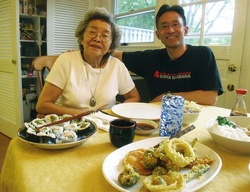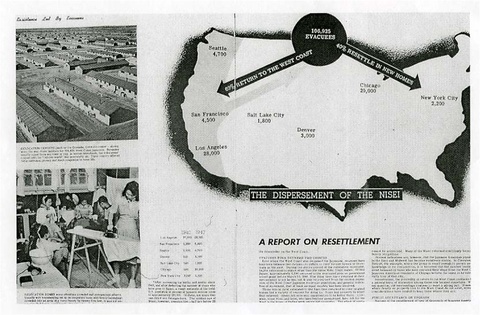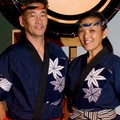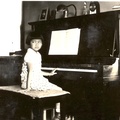Little Tokyo
one of my favorite places
feels like I’ve come home
when my mom was young
my grandfather took her there
to eat Chinese food
we went back last year
took a tour of the museum*
she was so grateful
I hope to return
dreams of living in LA
lots of musubi
REFLECTION
Paul Howard Takemoto recently composed this haiku. He is a seasoned writer—a published author with 16 years of journalism experience and a spokesperson for the Federal Aviation Administration. He sends these haiku from time to time to staff at the Japanese American National Museum, friends he has made since attending the 2003 “Life Interrupted: The Japanese American Experience in World War II Arkansas” conference in Little Rock. He writes these, he says, “as a reflection of how much I appreciate their kindness. Haiku are on the opposite end of the scale from the bureaucratic talking points I have to write for my job. Haikus are free and existential.”
What is striking about the haiku presented above is how with humor and brevity, it neatly expresses the legacy of the post-war WWII Japanese American resettlement experience and the role the Museum can play in reconciling some of the loose ends that were its consequences.
RESETTLEMENT
Paul is the son of two Nisei, who met in Washington, D.C. and raised their family in Kensington, Maryland, far from the Japanese American communities where they had grown up. His father, Ken Kaname Takemoto, was born and raised in Kapa`a, Kauai. He volunteered for the 100th Battalion/442nd RCT and served as a combat medic. Afterwards, he attended George Washington University, where he earned his Ph.D. Paul’s mother, Alice Setsuko Imamoto, was a high school student in Norwalk, California, when Pearl Harbor was attacked. Both of her parents, Japanese-language teachers, were arrested, leaving Alice and her three sisters on their own to prepare for their removal to the Santa Anita Assembly Center. They were separated from their mother for three months and from their father for one year, before they were all finally reunited at Jerome concentration camp in Arkansas.
When Alice was 16 years old, she was among the 5,500 young people who got clearance to leave the camps to pursue their education. She attended Oberlin College in Ohio on a piano scholarship. When she graduated, she moved to Washington, D.C., where her parents had resettled and were working as domestics in the home of a surgeon. Registered as “enemy aliens” and only recently released from their “parole” status, they had to report regularly to the WRA and INS. Alice explained to her son in an oral history interview, “See, that was the thing. You couldn’t go back to where you were from, because nobody was there and everything you had was gone. … We all came from these little communities. We were poor, but we never felt poor because we had that community support. We had that support. But it was taken away from us and that’s what’s sad.”
Alice and Ken met through the local D.C. chapter of the JACL in 1948. They married and had two children, and they were part of a community of Japanese Americans who had recently resettled in the area. Since all of their families were in California or Hawaii, they became one another’s extended families, sharing holiday meals, vacations, and Friday-night poker sessions. But for their son Paul, beyond these familial interactions, he had no particular attachment to being Japanese American, and the family did not really discuss what had happened to them during the war. Alice remembers that in the decades after World War II, “Things Japanese were not politically correct.” And while Paul emphasizes the “sheer niceness” of those involved in local JACL activities, he also recalls the awkwardness and sometimes “acutely embarrassing” Junior JACL discussion groups on racism or “…on an otherwise beautiful, sunny day in Rockville, Maryland, this mute group of Japanese American kids trying to learn Japanese while this earnest woman is putting out her best effort….”
Note:
* Paul specifies: “In order to comply with the seven syllable haiku rule, please pronounce ‘museum’ as if you were from New York—‘museem’
© 2011 Japanese American National Museum







